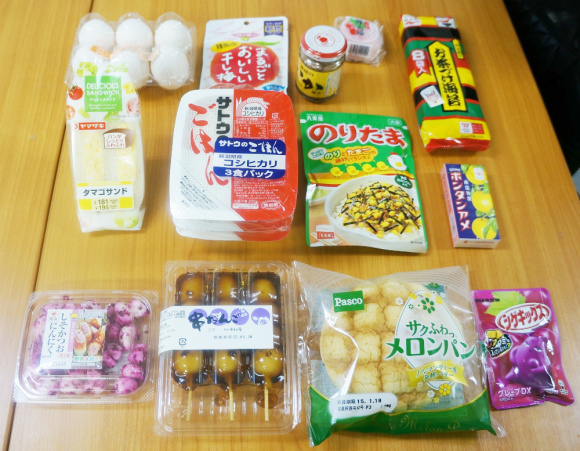
When you think of Japanese food, you likely think of sushi, ramen, or udon–all excellent choices! You might even find your mouth watering at thoughts of monjayaki or anko ice cream, but there may be a few that you’re not so familiar with. Today, we’re going to look at 12 lesser-known foods–and what one of our intrepid writers thought about them!
Our first food is “ika no shiokara,” or squid shiokara, a preserved food made from thinly sliced squid mixed with salt, which is then fermented. It would probably strike most first-timers as having a strong “fishy” smell–and perhaps not particularly tasty, but our Japanese friends tell us that after having it a few times it will start to grow on you. They also claim that it’s particularly good on rice or with green tea.
But what did Melanie, our guinea pig for today’s food, think about it? “The texture is slimy and it was way too salty,” she said, before giving it a score of 4 out of 10.
▼Kinda looks like mushrooms…
▼Melanie steels herself, takes a bite, and…
▼That’s a big ol’ nope!
Our next culinary delight is “shiso katsuo nin’niku,” which is garlic with shiso and skipjack tuna, and it apparently lacks garlic’s typical, um, aroma. We were even told that it won’t leave you with smelly breath–though you may not want to test this out before a date. Our Japanese writers said the sourness of the shio perfectly balances the umami of the tuna and garlic. But what did Melanie think of the purple food?
“The taste was sour and not really garlicky,” she told us, giving it a score of 5 out of 10.
▼Looks more like alien eggs than anything…
Our third food is actually a topping. Noritamago furikake is meant to be sprinkled over your white rice. While we imagine that almost everyone loves white rice, it’s probably also fair to say that quite a few people get sick of the taste eventually. Noritamago furikake is a combination of dried seaweed and egg, along with a few other ingredients to turn your boring rice into a party in your mouth! At least that’s the idea–did Melanie agree?
“This makes plain rice a lot more interesting and tasty.” That sounds like a pretty positive review–and she gave it 8 points out of 10! If you’re getting sick of plain white rice, be sure to get some of this furikake!
▼It really is a great addition to any bowl of rice.
Speaking of rice, here’s one food that might seem a little strange: instant ochazuke, which is rice with tea seasoning and water. Similar to furikake above, this is another way to make a bowl of white rice a bit more exciting. The instant version obviously saves you a lot of trouble (and you can usually find it at the convenience store)–all you have to do is sprinkle some on top and then pour in hot water! Apparently many Japanese folks use it as a hangover cure.
And it looks like Melanie is a fan, too! “You have to get used to having rice in water, but this is a great comfort food for cold days.” She gave it a very respectable 9 out of 10!
▼The toppings…
▼And now with water!
▼It’s supposed to be extra delicious with umeboshi (pickled plum).
Here’s one that should be a lot more familiar to most of our readers: tamago sando, or an egg sandwich. You’re probably thinking, “Hey, that’s not Japanese–I eat them all the time!” Well, you’re probably right, but our Japanese writers think the egg sandwiches in Japanese convenience stores are a bit different because they have softer bread. We’re not sure how true that is–but we have to admit that we generally avoid eating egg sandwiches from convenience stores in any country!
Melanie’s thoughts? “The bread had no crusts and the whole thing was soft and fluffy. Great taste.” She gave the sandwiches a 9 out of 10.
▼They also look very pretty!
▼”OMNOMNOMNOMNOM!”
▼Still not vomiting. What a relief!
Moving along to our next food, we have another bread-based item, melonpan, or melon bread. Our Japanese writers introduced this one by pointing out that, even though this is called “melon bread,” it doesn’t really taste like melon. It’s just bread that looks like muskmelon! As you might have guessed, it’s particularly popular with kids, but, of course, many adults eat it too.
Here’s what Melanie thought about it: “Crispy on the outside and soft on the inside, this is the perfect sweet snack. Not sure what it has to do with melons though.” She even gave it a perfect 10 out of 10!
If you like sour, this next food might be right up your alley! Hoshiume is like an extra dried version of umeboshi that is slightly sweet. We’re told it’s a great snack for when you’re traveling, but it looks like Melanie isn’t a fan…
“It’s really bitter and left a horrible aftertaste. I’m giving these the lowest score of all the food.” And, indeed, she did–only 2 out of 10 points!
▼It certainly doesn’t look like something you’d want to put in your mouth.
Mitarashi dango, which are rice dumplings on skewers with a sweet soy sauce glaze, are extremely popular in Japan. With their sweet-but-salty taste, they’re high on the list of recommended food to try in Japan, especially if you find yourself at a festival where you want to eat and walk at the same time!
Unfortunately, Melanie didn’t think they were that great. “I didn’t like the savory sauce,” she said, and only gave them 5 points.
▼It might have helped if they had Baymax’s face.
Though Japan doesn’t quite have the sweet tooth that some in the West (like this writer) have, gummies do fill up quite a few shelves in both convenience and grocery stores. Most of the gummies tend to be a combination of sweet and sour, though both are weaker than what you might find in many other countries. There are tons of different types available, but Melanie got to try some Shigekix.
“The powder is sour and the gummy part inside is sweet which makes a nice contrast, but they’re really hard and difficult to chew,” she said, scoring the gummies a 6 out of 10. We have to point out that different gummies have different toughness, so if you’re looking for something softer be sure to grab some Pure Gummies.
If you’re a fan of gummies, you’ll also want to check out bontan ame, which is literally bontan candy, a gummy that is quite soft and comes in an edible wrapper. Made of farina, the candy apparently has a somewhat lemon-orange taste, and we’re told it isn’t very easy to find outside of Japan.
But should you rush to grab a pack when you get to the country? According to Melanie, “[t]hese are sweets with edible wrappings that are not too sugary. Similar to Western jelly sweets.” If you think that sounds pretty good, she definitely agrees with you–and even gave the gummies a 9 out of 10!
▼The wrapper will literally melt in your mouth. Convenient!
For a candy that really screams “Japanese food,” you can’t do much better than ichigo daifuku, a sweet that features a strawberry in a mochi (rice cake) shell with anko (red bean paste). For a really Japanese experience, you might want to try eating it with green tea.
That said, it might not quite be to everyone’s taste. Melanie said, “The mochi outside is soft and the strawberry inside is sweet and crisp. It’s really tasty but personally I would have preferred it without the layer of red bean paste.” If you’re not a fan of anko, you’ll probably agree with her score of 8, too.
▼But even if you hate anko, you have to admit that looks amazing!
Finally, we have tamago-kake gohan, which is just rice mixed with egg–raw egg to be specific! Now, if you’re like this writer, you probably prefer your eggs to be thoroughly cooked, maybe even twice just to be sure. But while some of us may have hang-ups about eating raw eggs, it’s fairly common in many Japanese dishes. Our Japanese writers even insisted that there are a number of safety precautions taken, so there’s no worry of getting salmonella. We’re not entirely sure we believe them, but it does seem to be pretty popular.
But what did Melanie think? “The slimy texture takes a bit of getting used to and many Westerners have hang-ups about eating raw eggs, but once you get over that it’s actually really yummy,” she said, giving the dish 9 points out of 10!
▼Are you sure you wouldn’t like to scramble that egg first?!
▼Okay, yes, it does look pretty good, but…
▼Thankfully, Melanie didn’t end up in the hospital after her taste-testing adventure.
As you’ve probably noticed, quite a few of these foods use white rice, which probably isn’t very surprising. But you may be imagining that every dish was prepared with rice straight from the cooker–but you’d be wrong! While it’s not the best rice in the world, one of the most popular items in the convenience and grocery stores is the microwavable rice packs you see below.
▼”Microwavable” might just be the best tasting adjective in the world.
While we wouldn’t recommend only eating these rice packs while you’re in Japan, they are great for a quick (and cheap) meal. Just crack it open, put it in the microwave for a couple of minutes, and you’re ready to go.
▼You can even eat it right out of the container if you want!
Obviously, there are numerous foods and restaurants to discover in Japan, but if you’re on a budget or just looking to grab something quick, these are 12 foods you’ll be happy you checked out! And, they’re a great way to tide yourself over until you get to the greatest restaurant in the world!
All images © RocketNews24





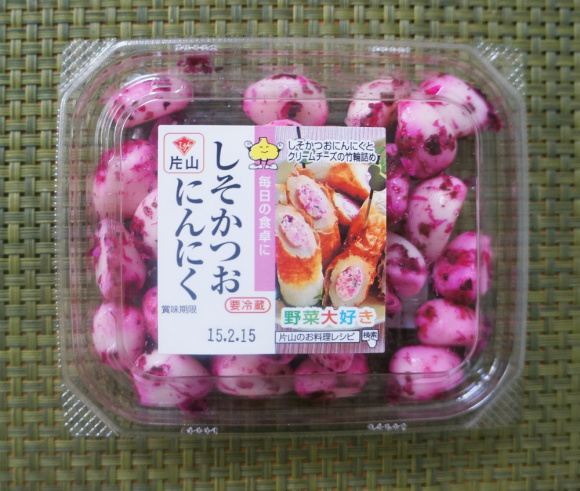
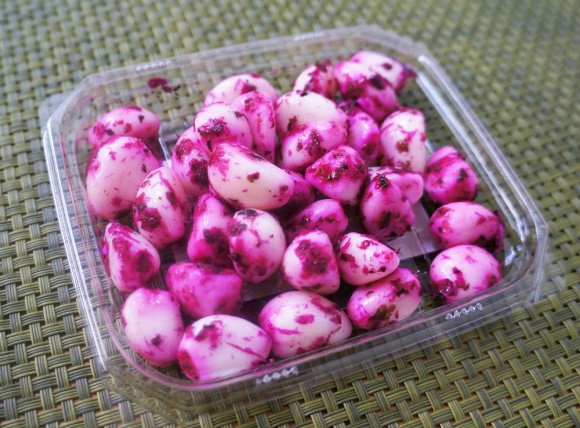
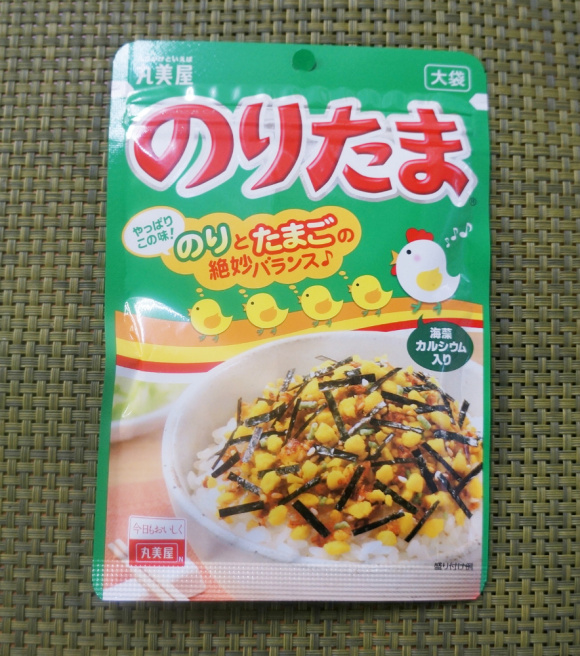
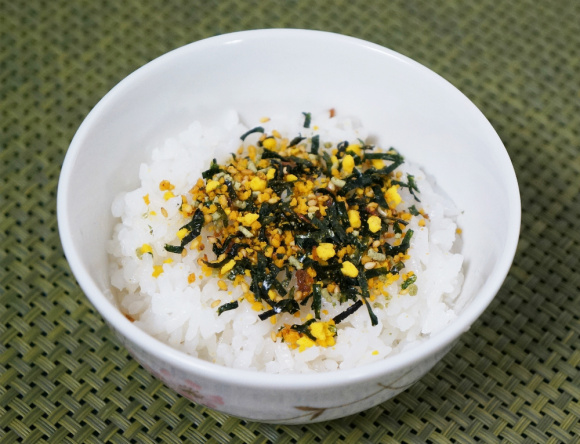
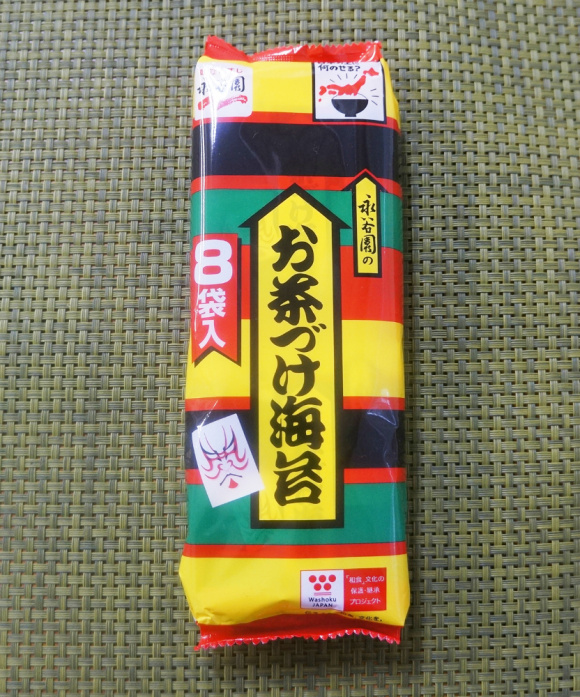
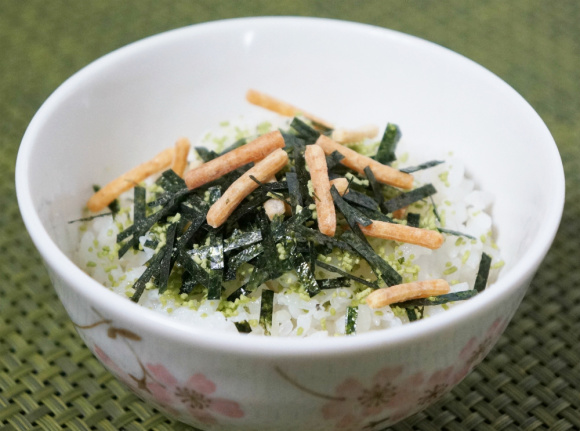


















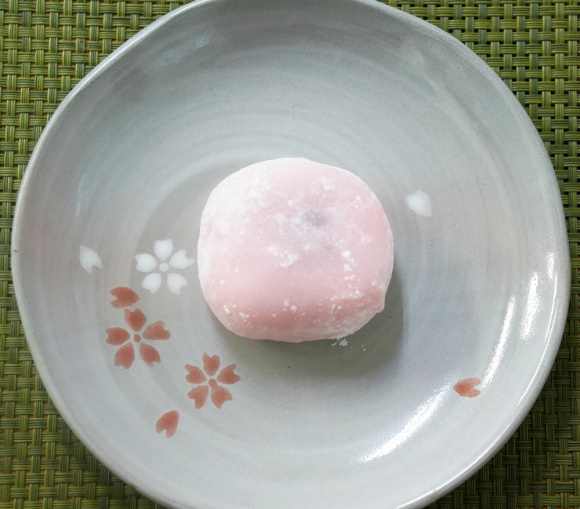
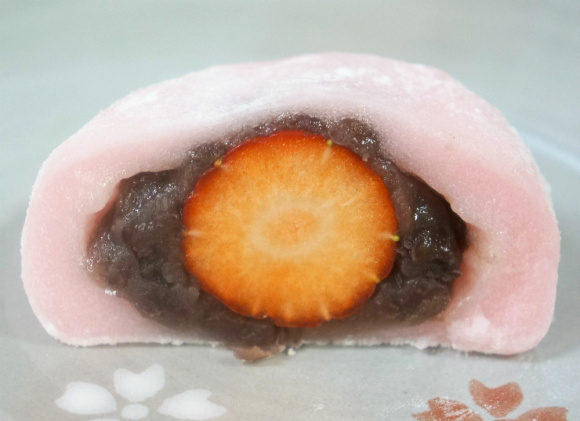





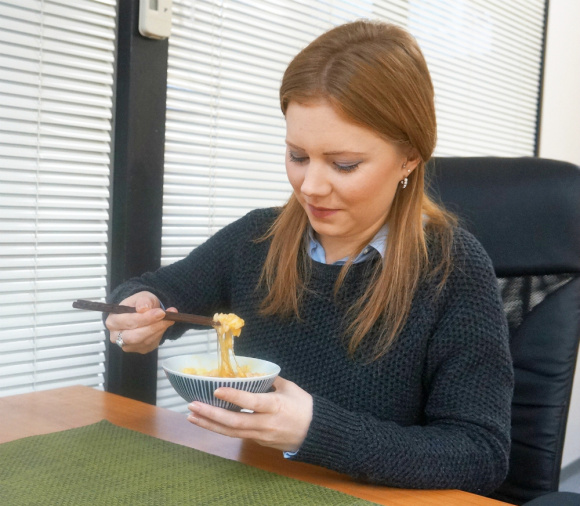
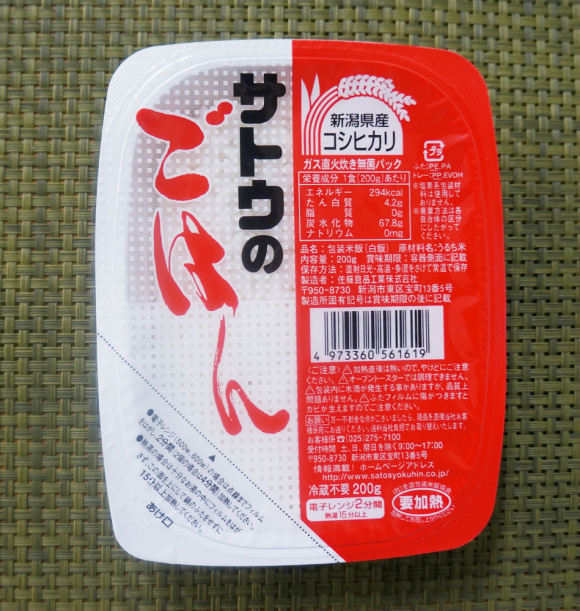


 Japanese convenience store chain releases new Immoral Konbini Food for a limited time
Japanese convenience store chain releases new Immoral Konbini Food for a limited time We tried 12 different gummy candies from a Japanese supermarket and found the most delicious one
We tried 12 different gummy candies from a Japanese supermarket and found the most delicious one Japanese convenience store packs a whole bento into an onigiri rice ball
Japanese convenience store packs a whole bento into an onigiri rice ball PewDiePie tries “every” Japanese snack and this is how people in Japan reacted to it
PewDiePie tries “every” Japanese snack and this is how people in Japan reacted to it Too lazy to cook? Try these new ready-made meals from Japanese convenience stores!
Too lazy to cook? Try these new ready-made meals from Japanese convenience stores! What’s inside the McDonald’s Japan fukubukuro lucky bag for 2026?
What’s inside the McDonald’s Japan fukubukuro lucky bag for 2026? Culturally confusing Vietnamese Burger King found selling Japanese food
Culturally confusing Vietnamese Burger King found selling Japanese food Otaku woman in Japan finds herself target of strange fake shoplifting scam, netizens urge caution
Otaku woman in Japan finds herself target of strange fake shoplifting scam, netizens urge caution Celebrate National Cucumber Day by learning about the cucumber-loving yokai, the kappa
Celebrate National Cucumber Day by learning about the cucumber-loving yokai, the kappa We try the sweets, soups, pastas, and fried chicken of KFC’s all-you-can-eat buffet restaurant
We try the sweets, soups, pastas, and fried chicken of KFC’s all-you-can-eat buffet restaurant We found possibly the quietest Japanese-style hotel in Tokyo’s bustling Shinjuku district
We found possibly the quietest Japanese-style hotel in Tokyo’s bustling Shinjuku district We check out the new apartment building construction site area that opened in KidZania Tokyo
We check out the new apartment building construction site area that opened in KidZania Tokyo One of Japan’s rarest sweets is a sell-out hit that looks and tastes like frost
One of Japan’s rarest sweets is a sell-out hit that looks and tastes like frost Studio Ghibli’s new desktop Howl’s Moving Castle will take your stationery on an adventure
Studio Ghibli’s new desktop Howl’s Moving Castle will take your stationery on an adventure How not to choose a kanji tattoo: A guide for World Cup footballers
How not to choose a kanji tattoo: A guide for World Cup footballers Starbucks Japan ready to get Year of the Horse started with adorable drinkware and plushies【Pics】
Starbucks Japan ready to get Year of the Horse started with adorable drinkware and plushies【Pics】 Cyberpunk anime meets traditional culture in Ghost in the Shell gold leaf Japanese changing screens
Cyberpunk anime meets traditional culture in Ghost in the Shell gold leaf Japanese changing screens 7 great places to see Mt. Fuji from without having to climb it
7 great places to see Mt. Fuji from without having to climb it Hello Kitty Choco Egg figures are an adorable trip through three periods of Japanese pop culture【Pics】
Hello Kitty Choco Egg figures are an adorable trip through three periods of Japanese pop culture【Pics】 7-Eleven Japan’s ramen-cooking robot whipped us up a bowl of noodles【Taste test】
7-Eleven Japan’s ramen-cooking robot whipped us up a bowl of noodles【Taste test】 Japan’s otoshidama tradition of giving kids money at New Year’s gets a social welfare upgrade
Japan’s otoshidama tradition of giving kids money at New Year’s gets a social welfare upgrade Sumo Sanrio! Hello Kitty and pals team up with Japan Sumo Association for new merch【Pics】
Sumo Sanrio! Hello Kitty and pals team up with Japan Sumo Association for new merch【Pics】 More Than a Capsule Stay: Why Solo Travelers Choose “global cabin Yokohama Chinatown”
More Than a Capsule Stay: Why Solo Travelers Choose “global cabin Yokohama Chinatown” Japan’s oldest largetooth sawfish in captivity back on display in Mie Prefecture
Japan’s oldest largetooth sawfish in captivity back on display in Mie Prefecture 7-Eleven Japan starts new temporary luggage storage service in over 300 branches
7-Eleven Japan starts new temporary luggage storage service in over 300 branches Disillusionment at Tsukiji’s tourist-target prices led us to a great ramen restaurant in Tokyo
Disillusionment at Tsukiji’s tourist-target prices led us to a great ramen restaurant in Tokyo Starbucks teams up with 166-year-old Kyoto doll maker for Year of the Horse decorations【Photos】
Starbucks teams up with 166-year-old Kyoto doll maker for Year of the Horse decorations【Photos】 Tokyo considering law requiring more trash cans following litter increase in heavily touristed area
Tokyo considering law requiring more trash cans following litter increase in heavily touristed area Tokyo’s Tsukiji sushi neighborhood asks tour groups to stay away for the rest of the month
Tokyo’s Tsukiji sushi neighborhood asks tour groups to stay away for the rest of the month Tokyo event lets you travel back in time, for free, to celebrate 100 years since Showa era start
Tokyo event lets you travel back in time, for free, to celebrate 100 years since Showa era start Sanrio theme park in Japan announces plans to expand into a Sanrio resort
Sanrio theme park in Japan announces plans to expand into a Sanrio resort Japan may add Japanese language proficiency, lifestyle classes to permanent foreign resident requirements
Japan may add Japanese language proficiency, lifestyle classes to permanent foreign resident requirements Stamina-destroying “Paralysis Noodles” are Tokyo’s newest over-the-top ramen innovation
Stamina-destroying “Paralysis Noodles” are Tokyo’s newest over-the-top ramen innovation Survey asks foreign tourists what bothered them in Japan, more than half gave same answer
Survey asks foreign tourists what bothered them in Japan, more than half gave same answer Japan’s human washing machines will go on sale to general public, demos to be held in Tokyo
Japan’s human washing machines will go on sale to general public, demos to be held in Tokyo Japan’s deadliest food claims more victims, but why do people keep eating it for New Year’s?
Japan’s deadliest food claims more victims, but why do people keep eating it for New Year’s? We deeply regret going into this tunnel on our walk in the mountains of Japan
We deeply regret going into this tunnel on our walk in the mountains of Japan Studio Ghibli releases Kodama forest spirits from Princess Mononoke to light up your home
Studio Ghibli releases Kodama forest spirits from Princess Mononoke to light up your home Major Japanese hotel chain says reservations via overseas booking sites may not be valid
Major Japanese hotel chain says reservations via overseas booking sites may not be valid Put sesame oil in your coffee? Japanese maker says it’s the best way to start your day【Taste test】
Put sesame oil in your coffee? Japanese maker says it’s the best way to start your day【Taste test】 No more using real katana for tourism activities, Japan’s National Police Agency says
No more using real katana for tourism activities, Japan’s National Police Agency says Starbucks Japan reveals new sakura drinkware collection, inspired by evening cherry blossoms
Starbucks Japan reveals new sakura drinkware collection, inspired by evening cherry blossoms Updated cherry blossom forecast shows extra-long sakura season for Japan this year
Updated cherry blossom forecast shows extra-long sakura season for Japan this year Fake eggs are being used in Japanese convenience store bentos
Fake eggs are being used in Japanese convenience store bentos Japanese convenience store food takes a walk on the weird side with…cup pork?
Japanese convenience store food takes a walk on the weird side with…cup pork? 7-Eleven Japan’s aged brown rice onigiri reveals a different side to convenience store food
7-Eleven Japan’s aged brown rice onigiri reveals a different side to convenience store food Japanese convenience store chain wows us with its hidden street food
Japanese convenience store chain wows us with its hidden street food Japanese convenience store or Japanese supermarket: Which one is cheaper?
Japanese convenience store or Japanese supermarket: Which one is cheaper? 7-Eleven’s new whipped cream sandwich takes Japanese convenience store food to a whole new level
7-Eleven’s new whipped cream sandwich takes Japanese convenience store food to a whole new level Japanese ramen chain elevates convenience store food with new microwaveable noodles【Taste test】
Japanese ramen chain elevates convenience store food with new microwaveable noodles【Taste test】 Should you warm up your convenience store onigiri rice balls in the microwave?【Taste test】
Should you warm up your convenience store onigiri rice balls in the microwave?【Taste test】 Snack time! Our team list their favorite Japanese convenience store treats
Snack time! Our team list their favorite Japanese convenience store treats How to turn konbini food into a luxury Japanese meal
How to turn konbini food into a luxury Japanese meal Lawson Store 100 releases retro line of Japanese convenience store foods
Lawson Store 100 releases retro line of Japanese convenience store foods Japanese convenience store sells an epic egg sandwich you won’t find anywhere else
Japanese convenience store sells an epic egg sandwich you won’t find anywhere else Weirdest convenience store drink in Japan? New drinkable Happy Turn makes stomachs turn
Weirdest convenience store drink in Japan? New drinkable Happy Turn makes stomachs turn Neco Meshi: The line of Japanese snacks that both you and your cat can eat! 【Taste test】
Neco Meshi: The line of Japanese snacks that both you and your cat can eat! 【Taste test】 Japanese convenience store’s new chicken katsu sandwich looks deceptive…but is it?
Japanese convenience store’s new chicken katsu sandwich looks deceptive…but is it? Japanese convenience store chain adds Neo Wagashi sweets to its lineup
Japanese convenience store chain adds Neo Wagashi sweets to its lineup
Leave a Reply